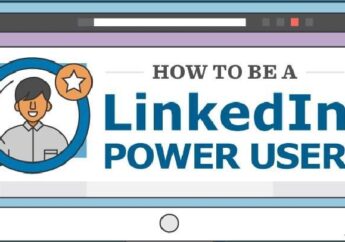How To Switch From A Federal Job To Self-Employment?
by Arnab Dey Job & Career Published on: 16 January 2024 Last Updated on: 30 May 2024

Settling into a new career path, especially when it involves transitioning from a federal job to self-employment, can feel like shifting gears in a moving car: tricky but not impossible. This change calls for navigating uncharted territories and perhaps a few surprising detours.
Every self-employment journey is unique – as diverse as the fingerprints we all possess. It’s an attractive path for many due to its lure of personal freedom and potential for financial success. However, such transitions require meticulous planning and gutsy decisions.
Let’s explore how you can make this switch smoothly and successfully, starting with your probable reasons for doing so in the first place.
Why Leave a Federal Job for Self-Employment?
It’s not an easy decision, leaving the comfort of a steady paycheck and benefits that come with federal jobs. However, a still voice whispering about independence and control over your destiny might inspire you to consider the path to self-employment. Let’s delve into some of the primary reasons pushing individuals toward this transformation.
1) Quest for Freedom & Flexibility
This remains one of the most compelling reasons why people step away from their jobs in search of autonomy. Being your own boss provides flexibility in working hours and control over decisions, ultimately shaping your professional journey.
2) Insurmountable Challenges
Federal employees often face unique challenges that could attract an appetite for self-employment. From opaque promotion pathways to limited opportunities for skill application, these hurdles can be frustrating over time.
Some issues like whistleblower retaliation or other forms of unfair treatment at work may require a federal employment attorney’s intervention. This legal guidance and representation can make your transition smoother as you seek greener pastures in the self-employment world.
3) Unleashing Creativity & Abilities
In rigid bureaucratic systems, creative minds may feel stifled as they cannot freely express or implement their innovative ideas due to prevailing red tape barriers.
4) Potential Financial Gain
While federal jobs provide stability, they can also be limiting when it comes to income potential. The structured pay scale may not always reflect the full value of your skills or efforts. Self-employment, on the other hand, offers unlimited earning potential once you burst through the initial struggle barrier.
5) Yearning for Personal Growth & Learning
Stagnation breeds discontentment. One’s personal growth and learning might feel almost nonexistent in an environment resistant to change or new approaches. In contrast, setting up your own business forces you to learn effective management tactics, financial juggling acts, and customer satisfaction strategies – essential lessons that contribute immensely to personal growth.
Switching From Federal Worker to Self-Employed
With the potential reasons to leave your day job out of the way, here’s a roundup of tips you could use to make your switch from feral employee to entrepreneur successful.
1. Assess Your Skills and Interests
Leaping into self-employment isn’t a venture of reckless abandon but rather a strategic paratrooper drop. It starts with the first parachute: Understanding yourself! Take time to identify your interests, strengths, and areas demanding improvement. What sets you apart in the market of your choosing? The answer is woven delicately into the fabric of your unique set of skills and passion.
Consider updating your skills or learning new ones pertinent to your industry of interest. It can be as simple as taking online courses or going for professional certification programs. After all, it’s a competitive world out there – and in the game of self-employment, players who bring unique offerings to the table often score more points.
2. Conduct Market Research
Having identified your unique skills, it’s time to dust off the old binoculars and scout the business terrain. Market research is akin to a lighthouse guiding sailors at sea—it helps avoid hidden obstacles while lighting the path toward profitable shores that’ll bring your business ideas to life.
Try answering these questions: What’s going on in your chosen industry? Who are your potential clients or customers? What about competitors?
Let’s say you’re a federal worker, passionate about baking, and planning to start an online bakery. Thorough market research would include studying similar businesses. How do they attract clients? What’s their special sauce—their USP (unique selling proposition)? And more importantly, noticing any gaps they’re leaving unaddressed can provide an excellent opportunity for your own venture.
Lovingly sculpted from accurate market data, this ‘lighthouse’ will reveal invaluable insights directing both immediate and future decisions for your new business.
3. Build a Solid Business Plan
It’s no surprise that your quest for self-employment will demand serious strategy—enter the need to craft a solid business plan. It acts as a roadmap, detailing the route from where you are now to your desired entrepreneurial destination.
A comprehensive plan typically includes:
- Executive Summary: A snapshot of your company, depicting what it’s about and why it promises success.
- Company Description: Outline your business objectives and how you strategically fit into the market.
- Market Analysis: Weave in findings from your in-depth market research here.
- Organization & Management Structure: Describe how you intend to structure your business. Are you going it solo, for a partnership, or an LLC? If it’s any of the last two, who does what?
- Product Line/Services: What are you offering? Why would customers be interested or benefit?
- Marketing Strategy: Elaborate on how you’ll reach potential customers and retain them.
This well-drawn map won’t just help convince third parties like investors or banks but also steer internal operations effectively toward designated goals.
4. Securing Finances for Start-Up Costs
Entering the realm of self-employment necessitates a pre-emptive financial thrust to propel your business into operational orbit. From tool acquisition, digital platform development, and marketing endorsements, down to merely procuring workspace; igniting the first stage of your business journey is akin to writing cheques with promises written in the memo.
So how do you rally resources? Depending on your financial situation and scale of business, viable options include personal savings, taking out a loan, or attracting investors. You could consider crowdfunding platforms or even pitch at local investor meet-ups known as ‘Angel Investor’ meetings.
Importantly, you need to calculate start-up costs realistically when securing this financing—it’ll cushion against premature drying up of funds and also help keep the faith of any investors involved bright and stable.
5. Navigating Legal Obligations
Setting out on the entrepreneurial journey without tidying up your legal obligations is a bit like trying to sprint with one shoe on. You might still move, but it’s clumsy and bound to trip you up sooner or later.
From registering your business to obtaining necessary permits and licenses – all the way to understanding tax requirements, each step carries a set of legal implications. Assuming you’re launching an online consultancy service, for instance, you’d need to understand the regulations surrounding data privacy and confidentiality agreements in your region. If it’s a food-based business like our earlier bakery example, health department permits should be a top priority.
Also don’t forget about intellectual property rights (IPR). That catchy business name or innovative product idea needs protection from potential copycats! When navigating these labyrinthine laws and processes, professional guidance from lawyers or chartered accountants can turn out to be true guiding lights in the dark alleyways of legalities.
Underestimating this step could result in fines or worse—therefore tread diligently here. Let’s not race ahead so hard that we forget to tie both our shoes.
6. Making the Actual Transition
Now comes the moment where you tread on your tightrope, balancing between holding onto the familiar sturdy pole of federal employment with one hand and reaching out towards the freedom of self-employment with another.
This pivotal transition demands a well-thought-out notice period to your current employer, that’s your boss or the Office of Personnel Management. This respectful gesture provides them enough time to find a suitable replacement without disrupting workflow. It also scoops up goodwill points for leaving on amicable terms, thereby keeping doors open for any future collaborations or networking.
And so as you start bridging this transition phase, use this opportunity to tie up any loose ends at your current job—like completing pending responsibilities, handing off significant projects to colleagues, or training your successor if possible. Likewise, have an action plan ready for kick-starting operations in your new venture from day one because once you step into the entrepreneurial realm, every second will count!
Winding Up
The adventurous leap from a federal employee to being your own boss can be exhilarating, yet perhaps in equal measure, a daunting one! But armed with robust planning, and driven by a resilient entrepreneurial spirit, you’d be well-equipped to navigate this life-altering transformation. As the above points sink in, here’s to venturing into self-employment – the journey that could chart new territories of professional fulfillment for you.
Read Also:







































































































